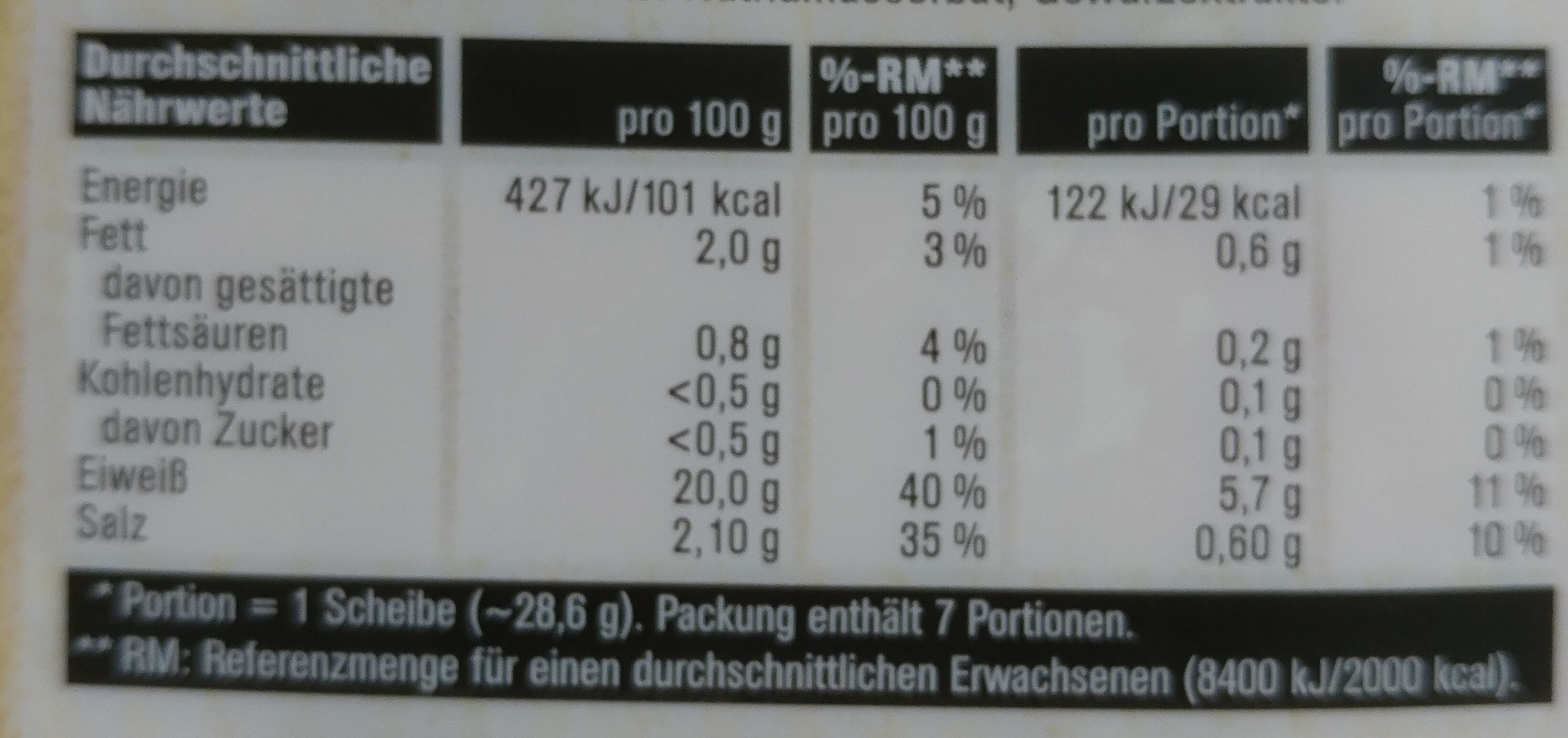Hinter schinken - Penny - 200 g
Ambiguous barcode: This product has a Restricted Circulation Number barcode for products within a company. This means that different producers and stores can use the same barcode for different products.
×
This product page is not complete. You can help to complete it by editing it and adding more data from the photos we have, or by taking more photos using the app for Android or iPhone/iPad. Thank you!
×
Barcode: 23382077
Quantity: 200 g
Packaging: Plastic
Brands: Penny
Categories: Meats and their products, Meats, Prepared meats, Hams
Labels, certifications, awards: German Agricultural Society, Silver medal of the German Agricultural Society, 2015 Silver medal of the German Agricultural Society
Traceability code: DE HE 10441 EG
Countries where sold: Germany, United Kingdom
Matching with your preferences
Environment
Packaging
Transportation
Report a problem
Data sources
Product added on by date-limite-app
Last edit of product page on by packbot.
Product page also edited by anticultist, kiliweb, ollebolle, openfoodfacts-contributors, rochus, teolemon, yuka.UllwZU9iWSt1L0lqbGNNYTR3R08ySWxXNnFlQWNFV1RCTVl0SVE9PQ.










